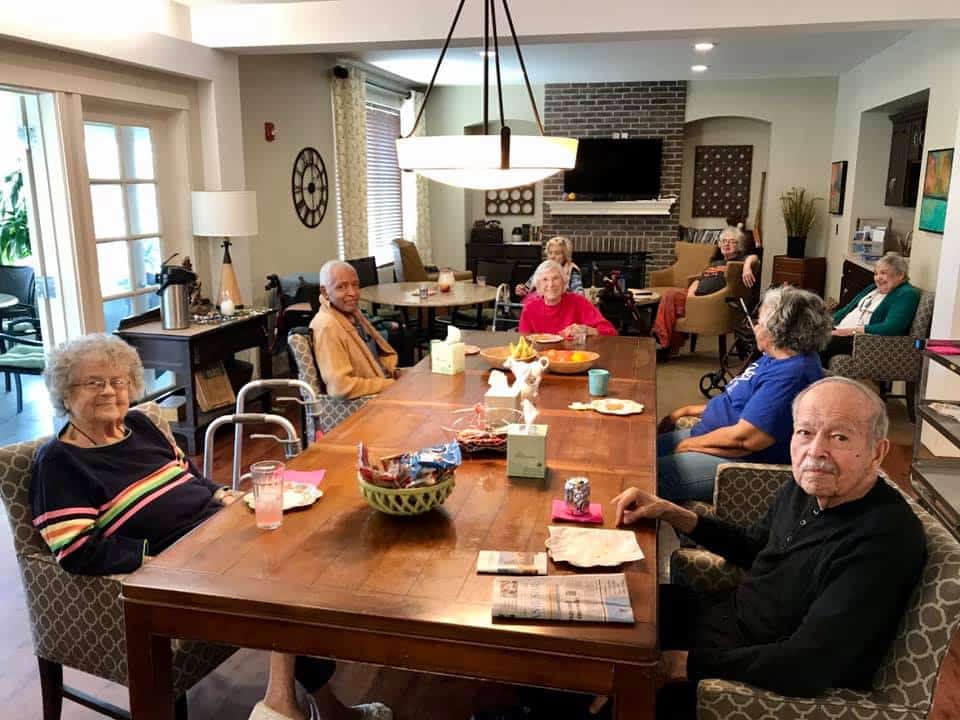Certain Myths Or Misconceptions Concerning Senior Living Have Continued To Be Firmly Held.
There are five myths that need to be approached with an open mind. Research done among Senior Citizens shows that these often stated “facts” are not necessarily factual. Over the next few weeks, we will look at these five myths through the lens of those Elders who are actually living in Senior Living communities.
To Start, It Is Essential To Understand That There Are Multiple Categories Of Senior Living In Kansas City And Around The Country.
- 55+ communities are popping up around the country. These are not traditionally called Senior Living, but it is more of an age designed community that serves older people who want their living situation to be maintenance-free and centered around socialization and activities. These communities would not typically have any additional services available.
- There are Independent Living communities, where people are living in a community where amenities are offered à la carte. You might pay rent for housing (or, in some cases, a buy-in purchase) and choose what additional services you are interested in from a menu of items. There may be dining services, housekeeping, transportation, maintenance, and other conveniences available. Residing in an Independent Living facility would include socialization and group activities.
- There are also communities that provide everything that Independent Living does, but with onsite healthcare support. Typically this is called Assisted Living. A resident would enjoy all meals, housekeeping, and maintenance, plus whatever medical support that’s needed.
- As an adjunct to Assisted Living is the specialty services of Memory Support. In Memory Care, residents live in a secured space, receive all the healthcare services they need as well as extra supervision, and participate in activities tailored to dementia or Alzheimer’s.
- At the next level, commonly called Nursing Home Care or Skilled Care, residents need a lot of support with their daily activities. This would include personal hygiene care, medication management, ambulation services, and a host of other services. This would be the highest level of care one would need.
- Some communities that have all levels of care that are considered Continuing Care Retirement Communities or CCRC. These communities typically cover a campus with multiple buildings where all levels are available.
Age Wave, A Research And Consulting Company, Surveyed The Thoughts And Perceptions Of The 65+ Population Concerning Senior Living.
They learned five myths that prevailed among this age group. Starting this week and in the following weeks, we will address each of these myths with the realities of today’s Senior Living. Age Wave discovered a dramatic difference between perception and fact.
Myth #1: “My Current Home Will Be The Best Possible Place To Live In Retirement Years.”
Nine out of ten Seniors who were surveyed believed that the best option was to stay put in their homes during retirement. The reality is that, throughout life, people choose different types of homes to meet their evolving lifestyles. From your parents’ home to college dormitories, to smaller apartments during singlehood, to large family homes, people repeatedly move to new homes that provide the best amenities for each stage of life. The current stage of life is no different.
The belief behind the myth is that Seniors think they have more freedom and a sense of purpose when residing in their homes. Some may think there are too many restrictions in Senior Living. In truth, there is complete freedom to come and go, to engage or not engage. If you went to church, grocery store, shopping, movies, or the symphony before, you can continue those activities when living in a community.
A Purposeful Life During Retirement
When living alone in your own home, television may become the primary source of daily activity. And it is not a good substitute for healthy social interaction. It makes no difference if you are entirely independent or in need of support for the activities of daily living; socialization is necessary for the quality of life.
The statistics are revealing. The study showed that this age group spent an average of 2 hours and 48 minutes per day doing household work in their home as opposed to 1 hour for those living in a Senior Living apartment.
At home, they spent an average of 35 minutes per day socializing, and in Senior Living, they spent more than 3 hours. At home, Seniors spent 1 minute on educational activities, and in the Senior Living, they spent on average 2 hours per day!
The facts indicate that there is much more time to pursue a purposeful life when living in a Retirement Community.

